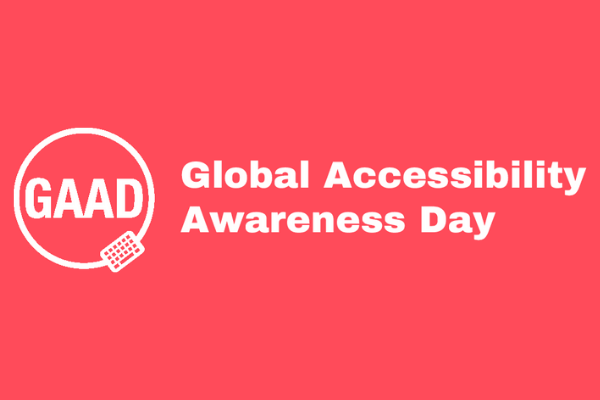
May 19th, 2022 marks the 11th Global Accessibility Awareness Day (GAAD), held annually on the third Thursday of May. The main goal of GAAD is to bring forth more thought about inclusion and education about accessibility, as well as how to really focus on making it…more accessible.
Many of us may not realize how important inclusion and accessibility are for the disabled until we or someone we love are affected, just like the one billion other people worldwide. Making an impact in 2022 and beyond means refusing to ignore or look away from the difficulties of being disabled or having special needs–and instead, helping them find ways to engage as fully as possible in their work, in their communities, and in the world.
3D Printed Adaptive Aids
3D printing technology has played a huge role in supporting and making adaptive aids more accessible for the disabled, and for individuals restricted at home or at work. Even the most simple of products, like 3D printed grippers, can be fabricated fast and economically. Available in a wide variety of materials, from Aluminum to Nylon 12 [Versatile Plastic], 3D printed grippers may also feature integrated electronics or robotics for more complex functionality.
3D printed assistive devices are often multi-faceted, whether an individual consistently needs help grabbing products from a top shelf, reaching up or down from a wheelchair, or if a patient needs better range for grasping any number of household items while healing from a major surgery. Other items can also be 3D printed easily, like streamlined, small step stools that take up little space, or portable wheelchair ramps for transportation up or down a curb or small incline. Many other assistive devices are also available in 3D print for opening jars, turning keys, or pulling zippers. 3D printed hearing aids are extremely popular too.
3D Printed Prosthetic Limbs
Numerous Shapeways customers have developed and 3D printed prosthetics, often incorporating robotics and bionics too. For individuals who may need a limb replacement, the ability to grasp things and be productive–as well as move around–often feels like winning the lottery. This is even more true for children in developing countries who may live in remote locations and are in dire need of assistance.
Volunteer organizations like e-NABLE, who “use 3D printers to make free and low-cost prosthetic upper limb devices for children and adults in need” have been extremely helpful in engineering thousands of designs, and delivering prosthetics, mainly for the arms and hands, to children in need around the globe. A quick 3D scan can be performed to create a customized device that can also be easily altered. The device can then be printed again if necessary with quick turnaround and considerably less expense. Not only that, but for large numbers of such devices being made for adults and children in remote areas without easy access to medical care, 3D files can be easily transferred to individuals or doctors with 3D printers.
3D Printed Orthotics
3D printed orthotics are often quite a simple design, but they are directly related to mobility which makes them enormously helpful. Responsible for supporting the foot and improving numerous serious conditions–to include the challenges associated with leg length discrepancies–orthotics offer many different benefits. They are easy to purchase over the counter with a one-size-fits-all concept; however, with the ability to take a 3D scan of the foot and make a completely customized orthotic, patients can significantly enhance their mobility, improve balance, protect joints, and reduce the potential for injury.
3D printed orthotics or prosthetics can be modified quickly, in comparison to devices made with traditional manufacturing that involve lengthy fitting times and extended waits on delivery. This is especially helpful for children as they may be more uncomfortable during the fitting process and even outgrow traditionally made medical devices before they are delivered.
Continued Support for Greater Accessibility and Inclusion for the Disabled
Talking about disabilities and how to help with special needs, whether people are impaired in terms of hearing, vision, mobility, or other issues is important; however, real change can only happen when we take that extra step forward to develop, design, and manufacture products that empower and make independence possible in 2022, and beyond.
3D printing has been extremely successful as an assistive technology, providing the ability to design with freedom, make unlimited iterations during product development, and upload 3D models at any time to a 3D printing service like Shapeways.
About Shapeways
Enjoy the benefits of this advanced technology and a wide range of materials from Shapeways for 3D printing your creations with accuracy, complex detail, and no minimum or limits in terms of mass customization or single part orders. Shapeways has worked with over 1 million customers in 160 countries to 3D print over 21 million parts! Read about case studies, find out more about Shapeways additive manufacturing solutions, and get instant quotes here.


